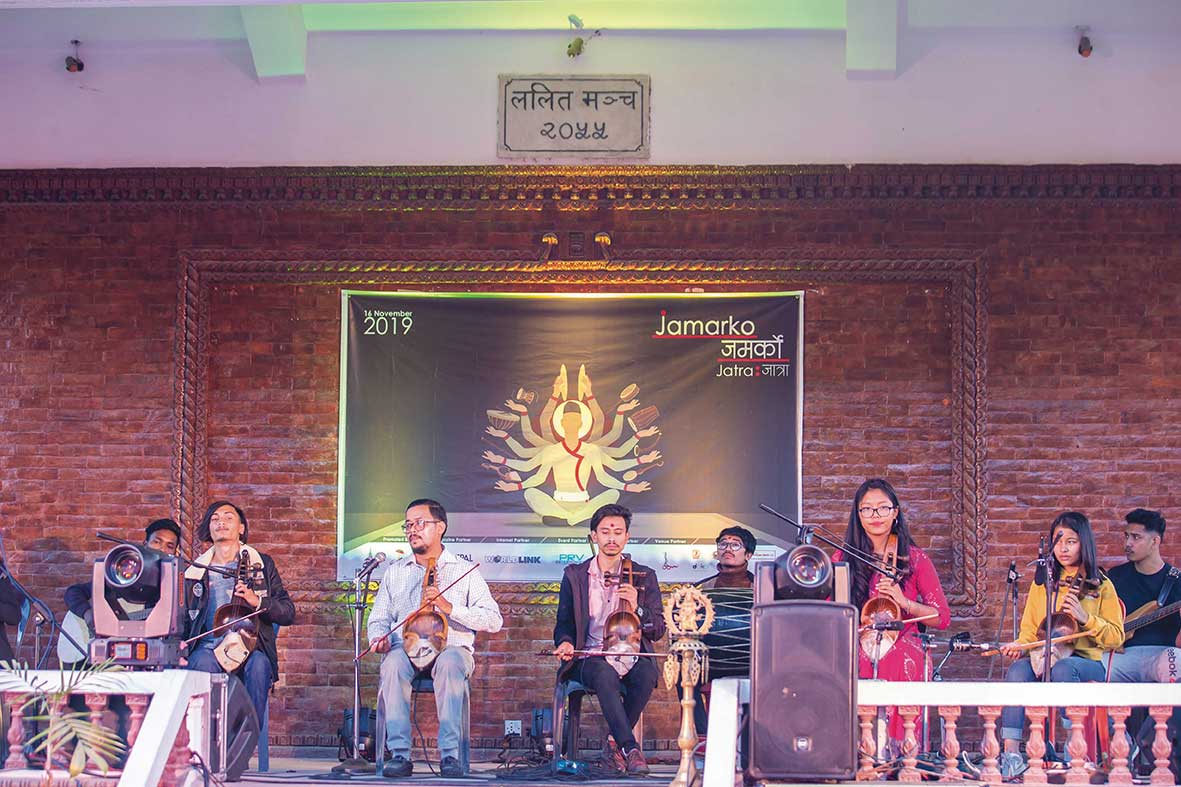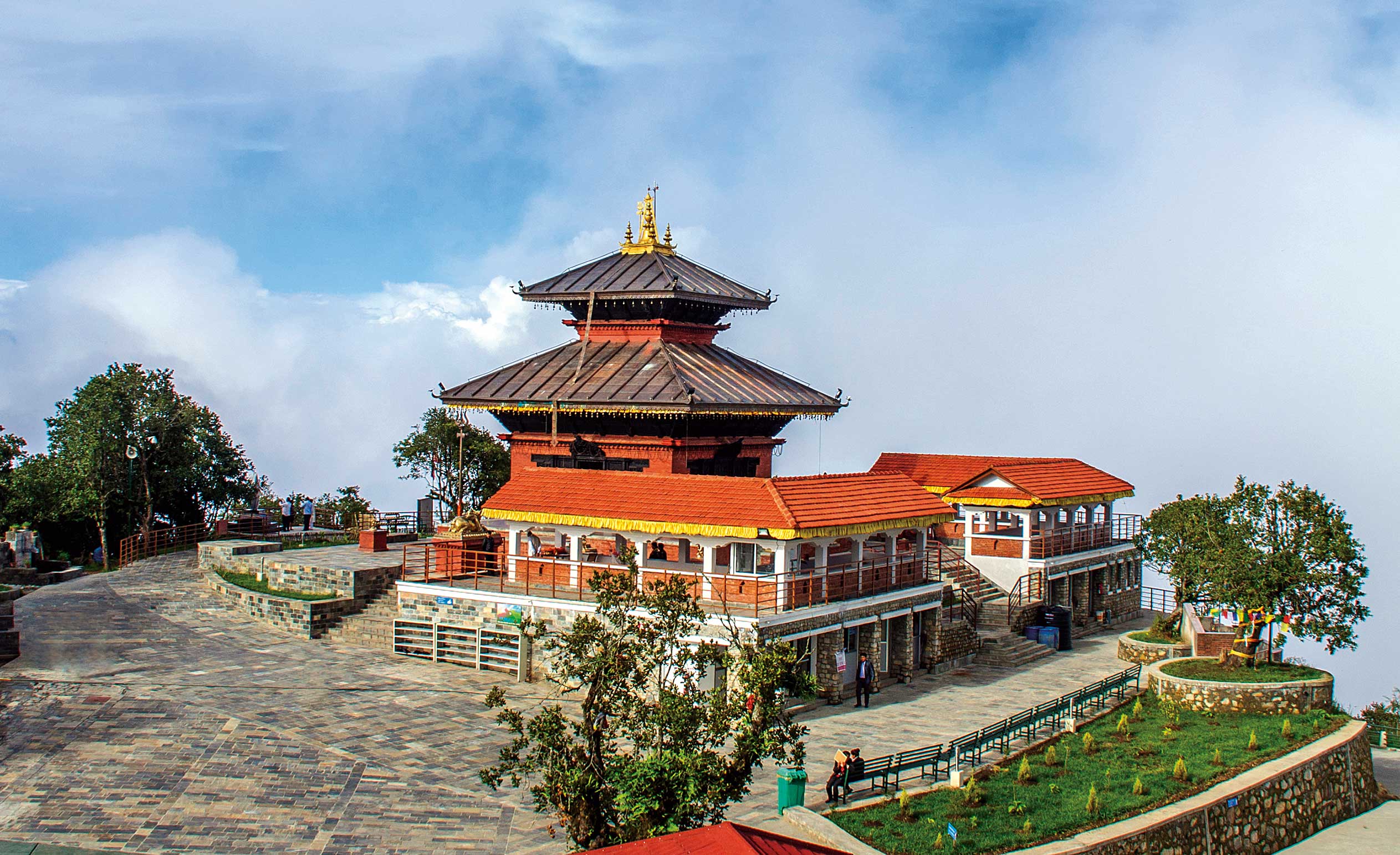In the warrens and alleys of the old city, musicians young and old practice and prepare for their part in an ancient, melodic pilgrimage.
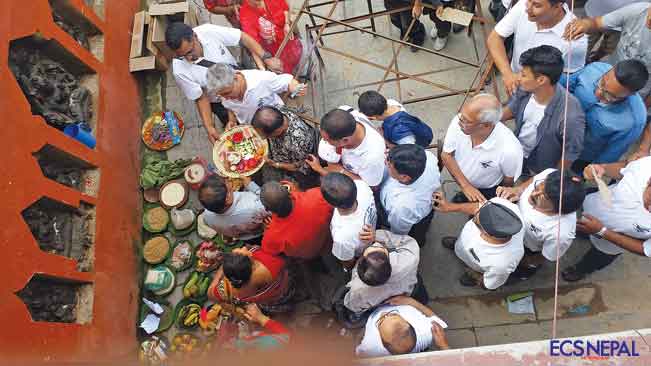
Every July, from 5:00 p.m. onwards, Pignani, located right behind the debris of Kasthamandap, starts hearing the faint sounds of drum beats. Enter the warren of alleys, and you will see young people gathered around the small courtyard at Piganani, busy practicing the tunes of Gunla. Occasionally, elderly locals gather around to watch them.
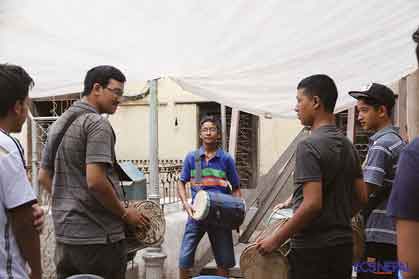
Gunla is a holy month in the Newar calendar, during which some Newar communities pay a visit to Swayambunath Stupa every morning. Different music groups all around Kathmandu Valley start practicing a month earlier for Gunla. At Piganani, the Tamrakar Baja Guthi oversees music training during Gunla and during the Newari New Year, which falls during Tihar.
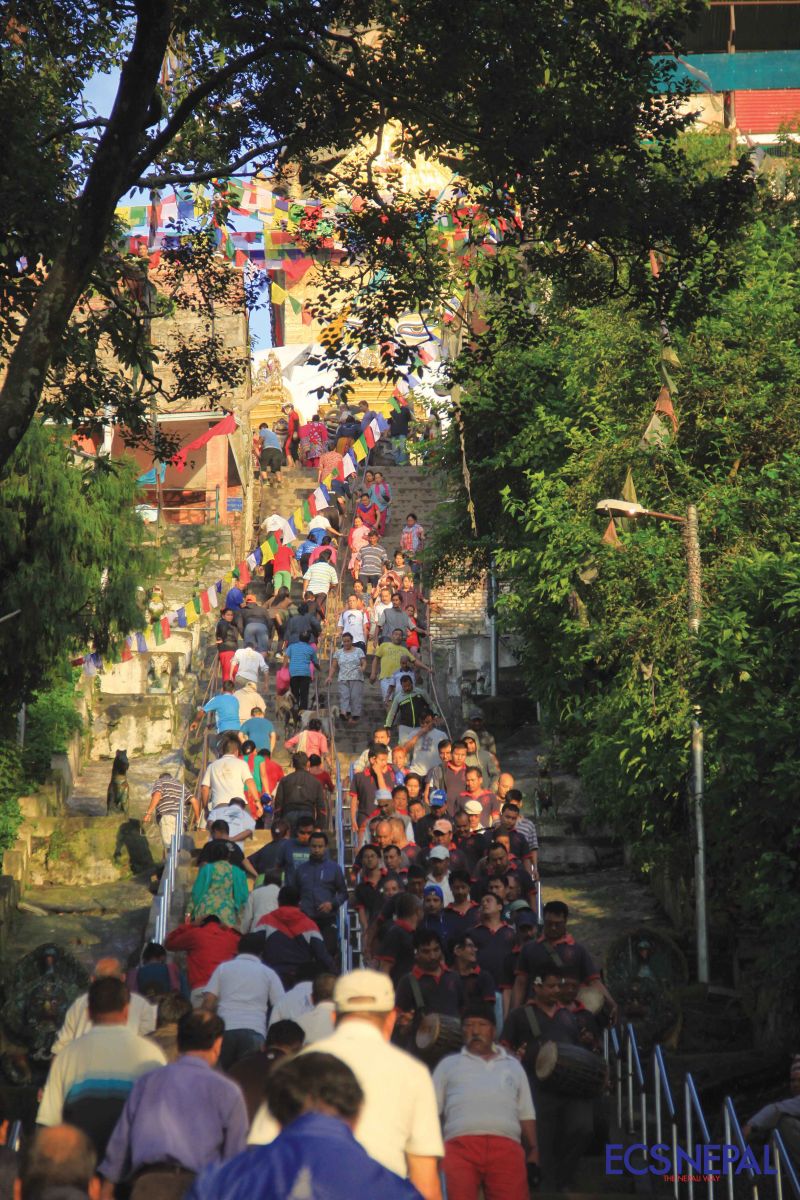
“After the earthquake, we had to discontinue the training for two years, but now it has resumed. We also have a higher number of participants compared to previous years,” says Vijay Shakya, resident of Piganani, and one of the teachers. Vijay, along with Shuvash Ratna Tamrakar, are both still in high school. They say, “We started playing music for Gunla when we were both ten years old. Generally, people stop continuing to participate when they grow older, after they get married.”
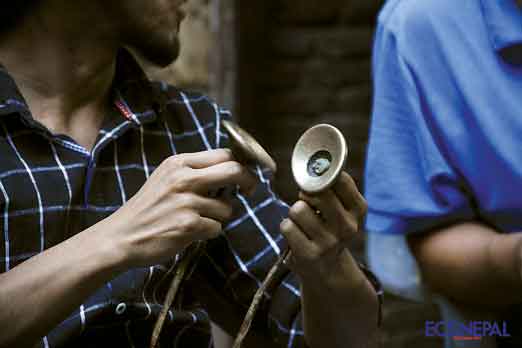
For the first few weeks, everybody starts off by trying to remember the beats of the various music. Each member gets to learn the different instruments that are played in Gunla. “The bigger drums are called dhaa, and they are the main instruments in Gunla music, but the small cymbals, called taa, are the most important, as they help you figure out the beats. And we also have the big cymbals, called bhusya, which also help give you the beats, and since they are bigger, you can hear them better, especially when we’re playing in a crowded place,” explains Vijay. Besides the drums and cymbals, Gunla baja (instruments) also consist of the naykhin, a small drum, and chuhusya, another kind of cymbal. Although some of the other music groups also play wind instruments like mwahali and basuri, the Tamrakar music groups do not play them.
“In order to mark the Gunla, we celebrate the Dhyah Lhayegu. This is basically a short salutation to the deity of arts, Nasah Dhyah. We play a separate piece of music when we head out in a procession towards the temple,” adds Shuvash. Every music group has their own Nasah Dhyah. For the Tamrakar Baja Khala, the Nasah Dhyah is located in the courtyard at Piganani, and another opposite the Kabindra Pur Temple at Basantapur Durbar Square. Lawantah, Chwoh, Graha, Astar, Palimaa, and Partaal are the short pieces that the musicians start off with. The longer piece is called Gwara. “We only play it on Saturdays during Gunla, since everybody is available then,” says Vijay.
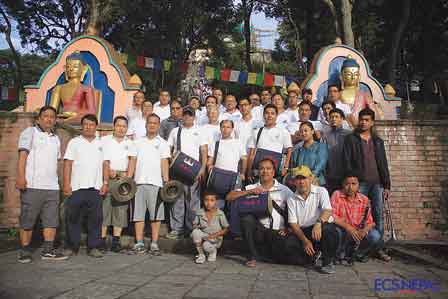
At Swayambhunath, they meet other Gunla groups. Shuvash particularly enjoys it, because to him, the whole experience becomes very “exhilarating, and also competitive. You want to make sure that the loudest music heard is from your group.”
While the young groups of people are busy learning the music notes, Chinni Kaji Tamrakar, one of the elderly members, looks on, occasionally offering suggestions. Aged eighty-three, he still makes it to the evening practice session, and is there until eight. “I played during the Gunla month for nearly sixty years,” he reminisces. Some of the teachers who now teach music were taught by him. “These instruments that they are playing have a history of more than three hundred years. More young people have taken an interest in playing music now.” The Gunla baja are stored in one of the rooms of his house. Before the earthquake, they were kept in an adjoining house, which was later affected by the earthquake.

Until a few years ago, the group had more senior members, and only a few young people would join in. Most that came to learn music were referred to them through their relatives with family members who played music in Gunla. The Tamrakar Gunla Samiti also calls for application in a Nepal Bhasa newspaper, too. “After the earthquake, a lot of young people started getting interested in learning traditional music, and that is encouraging,” says Vijay. Both he and Shuvash were also drawn to the music due to their interest in learning more about their traditional culture.
They say, “We don’t know how long we can continue with this, but we hope to continue as long as we can, and also to teach young children who can ensure its continuity."





